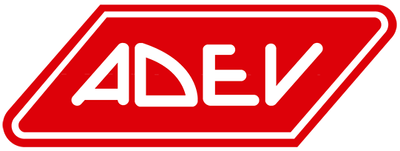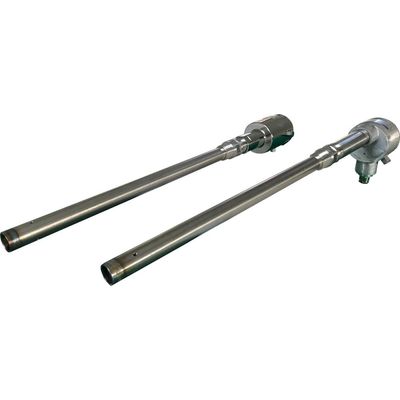


ADEV - Model ZCS - Zirconia Probe for Carbon Potential Control in Heat Treatments
The ZCS Carbon Probe is a resilient in situ analyser, intended to be used to control the carbon potential of an endothermic or Nitrogen/Methanol based heat treating atmosphere. The patented electrode design and the special used alloy, reduce the contact area with Zirconia. This solution increases the probe service life, reduces carbon built up and guarantees a very fast response time. ZCS Carbon Probe, located directly in the furnace heat zone, responds almost immediately to changes in the carburizing atmosphere and totally eliminate the need for gas sampling system
- Carbon Potential [%C]
Extreme Roughness
- Ideal for use in carburizing, neutral hardening and gas generator applications.
- Resistant to sooting
- Equipped with purge port for probe burn-off
- Special selected Alloy sheath
- Resistant Alloy electrode welded to the metal sheath, acting like a lead wire. Failure of this system is virtually impossible.
Easy to Use
- Thermal and mechanical toughness makes the probe suitable to be installed and removed in very short time
- Optional integral thermocouple
- Set of adapters and joints to adapt the probe length to every mounting
Low Costs of Ownership
- Easy replacement with all first and second generation probes on the market
- Reconditioning and certification service with fest delivery time to reduce plant stop to the minimum
European Compliance
- Low Voltage Directive 2014/35/EU
- EMC Directive 2014/30/EU
Probe
- Measuring PrincipleZirconium Oxide (Zirconia)
- Accuracy± 0.03% in carbon weight within the used range
- Response Timeless than 2 sec.
- Output Signal1000 ÷ 1300 mV (0.01 ÷ 1.6% C)
- Type of ThermocouplesType K, B, S (optional)
- TC OutputE.M.F. function of the temperature
- ImpedanceConnect the probe to external devices with impedance 10 MΩ or higher
- Response Timeless than 2 sec.
- Wiring ConnectionsZCS3: plug-in connector (male and female included)
- ZCS4: cable gland for cable max. 10 mm and inner terminal strip
- Pneumatic ConnectionsReference and purge air inlet: 1/8” NPT-F
- Temperature Range700°C to 1050°C
- Head TemperatureMax. 150°C
- Reference AirDry, clean and oil-free air. Flow rate: 50…100 cc/min.
- Purge AirDry, clean and oil-free air. Flow rate: 2000 cc/min.
- Process Connection1” NPT
- Sheath diameter27 mm
- Sheath MaterialSpecial Alloy (field tested for long operation)
- Carbon potential control of an endothermic heat treating atmosphere
- Carbon potential control of Nitrogen/Methanol based endothermic heat treating atmosphere
- Carburizing atmosphere
The measuring principle on which the analysis is based is linked to the use of Zirconium oxide which, at high temperatures, can behave like a solid state electrolyte, developing an electromotive force on two electrodes placed in contact with different O2 concentrations (partial pressures), proportional to the temperature in Kelvin degrees (°K) and the logarithm of the ratio between the two pressures PO2’ and PO2” in accordance with Nernst’s well-know ratio:
E = RT / nF (Lg P02’ / P02“)
Where:
- R = Perfect gas constant (8,31 Joule/degree bulk)
- F = Faraday’s constant
- T = Absolute temperature in °Kelvin
- n = 4
